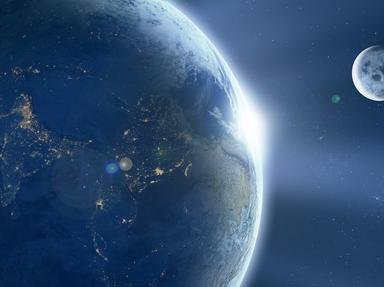Quiz Answer Key and Fun Facts
1. There is an obvious difference between the planets of the inner solar system (here, inside the asteroid belt) and outer solar system (Jupiter's orbit and beyond.) The planets of the inner solar system are small and rocky, while the planets of the outer solar system are huge balls of gas. Less often thought about is the distribution of icy bodies in the solar system. So, I ask, what region of the solar system will this quiz be concentrating on? Where would you be most likely to find a planet- or moon-size chunk of ice?
2. The next question concerns the nature of this "ice." Which of these compounds can form "ice"?
3. Often, one will read such statements as, "The moon seems to be made of a combination of ice and rocky material." What data is used to come up with this?
4. A number of icy moons show evidence of recent (within the past three billion years or so) geologic activity. Examples would be Jupiter's Ganymede and Callisto, Saturn's Enceladus, Uranus' Miranda, and Neptune's Triton. Which of these factors would tend to increase a moon's likelihood of having some geologic activity?
5. Many of the craters on the icy moons are very flat and shallow with a bowed-up center, in sharp contrast to rocky planets and moons. Some craters even seem to have been "erased" almost entirely. What accounts for the difference?
6. The surface of Jupiter's moon Europa shows sheets of ice separated by thin, dark ridges. These sorts of structures do have an analogue on Earth. What is it?
7. Measurements from anomalies in Jupiter's magnetic field near Europa suggest that Europa has a what?
8. Neptune's moon Triton is odd. Some part of its surface is covered by this knobby, wrinkled landscape. It is even blue. Nobody quite knows what geological process produced it. So I won't ask you that. I'll just ask: What is it called? What fruit is it named after?
9. Pluto and Charon are almost like a double world-- they orbit each over at close range, and Charon is almost half Pluto's size. So, you would expect their ices to have the same composition. Right? Wrong. Uh-oh. We need a theory. What is it?
10. Saturn's moon Iapetus also presents something of a geological problem. Why exactly is it so strange?
Source: Author
pu2-ke-qi-ri
This quiz was reviewed by FunTrivia editor
crisw before going online.
Any errors found in FunTrivia content are routinely corrected through our feedback system.

